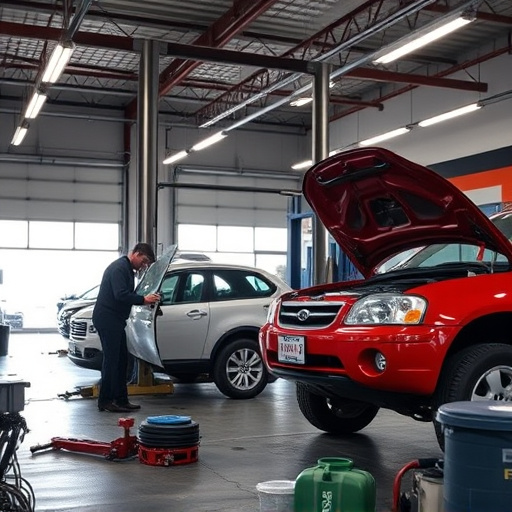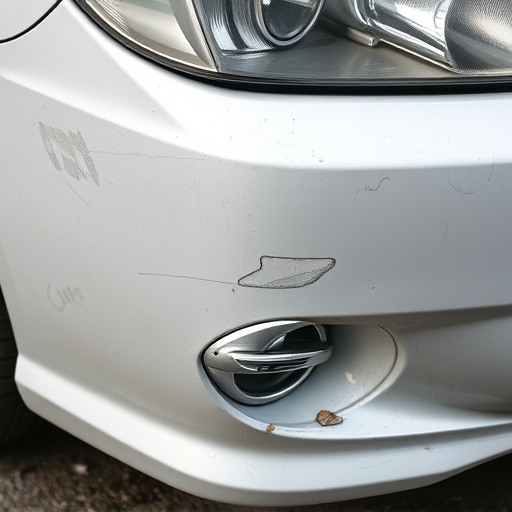Insurance claim management (ICM) ensures fairness, accuracy, and efficiency in processing vehicle damage claims by adhering to regulatory frameworks and internal policies. It involves collaborative roles: adjusters investigate and determine liability, while collision repair shop managers oversee technical repairs, maintaining industry standards. Digital transformation enhances ICM through AI and ML technologies, which improve compliance checks, detect fraud, analyze damage from images, reduce administrative burdens, and enable real-time analytics for proactive risk mitigation.
Insurers prioritize efficient and compliant insurance claim management to maintain operational integrity. Non-compliance can lead to significant financial losses, regulatory penalties, and reputational damage. Understanding and adhering to compliance standards in the claim process is crucial for maintaining trust among policyholders. This article explores key aspects of insurance claim management compliance, delving into the roles involved, technology’s role in streamlining checks, and highlighting the evolving landscape of this critical function.
- Understanding Insurance Claim Management Compliance
- Key Roles and Responsibilities in Claim Process
- Technology's Impact on Streamlining Compliance Checks
Understanding Insurance Claim Management Compliance

Insurance claim management compliance is a critical aspect that insurers focus on to ensure fairness, accuracy, and efficiency in processing claims. It involves adhering to regulatory frameworks, internal policies, and industry standards while handling insurance claims, particularly for vehicle damage or accidents. The primary goal is to streamline the claims process, reduce fraud, and protect policyholders’ interests. By implementing robust compliance measures, insurers can guarantee that every step of the claim management process, from initial assessment to final settlement, aligns with legal requirements and ethical practices.
Compliance in insurance claim management encompasses various elements, including proper documentation, accurate valuation of damages, and adherence to guidelines for engaging collision repair centers or car paint repair specialists. For instance, when dealing with vehicle bodywork repairs, insurers must ensure that the chosen repair facilities are licensed, reputable, and capable of performing high-quality work. This not only maintains the value of the vehicle but also safeguards policyholders from potential overcharging or substandard repairs.
Key Roles and Responsibilities in Claim Process

In insurance claim management, several key roles and responsibilities work together to ensure a smooth and compliant process. At the forefront are claims adjusters, who investigate and evaluate insured individuals’ claims, determining liability and extent of coverage. They act as the primary point of contact between the insurer and the claimant, making crucial decisions that impact the claim’s outcome.
Another vital role is played by experts in collision repair shop management. These professionals oversee the technical aspects of repairs, ensuring they adhere to industry standards and guidelines. This includes coordinating with body shop services for auto glass repair, managing replacement parts, and verifying the quality of workmanship. Effective collaboration between claims adjusters and collision repair specialists guarantees that all repairs are performed accurately and according to legal and insurance regulations.
Technology's Impact on Streamlining Compliance Checks

The digital transformation has significantly revolutionized insurance claim management, particularly when it comes to compliance checks. Advanced technologies like artificial intelligence (AI) and machine learning (ML) are now employed to streamline processes that were once manual and time-consuming. Insurers can use AI algorithms to analyze vast amounts of data from various sources, such as vehicle sensors, collision reports, and repair estimates, enabling them to detect anomalies and potential fraud with remarkable accuracy.
For instance, in the context of car damage repair or a fender bender, ML models can assess the extent of damage by comparing before-and-after images, ensuring that repairs align with the reported claims. This not only reduces the administrative burden on claim adjusters but also enhances the overall efficiency of the insurance claim management process. Moreover, real-time data analytics allows insurers to identify patterns and trends in claims, enabling proactive measures to mitigate risks and fraud in Mercedes Benz collision repair or any other vehicle make.
Insurance claim management compliance is a vital aspect of ensuring fair and accurate payouts, protecting insurers from fraudulent activities, and maintaining customer trust. By understanding the key roles involved, adopting efficient technology, and implementing streamlined processes, insurers can effectively navigate the complexities of claim management. This approach not only enhances operational efficiency but also fosters a robust and transparent insurance ecosystem, ultimately benefiting policyholders and the industry as a whole through improved insurance claim management practices.














